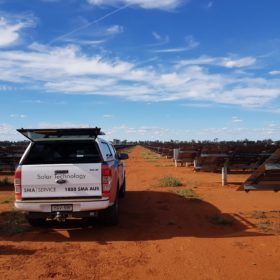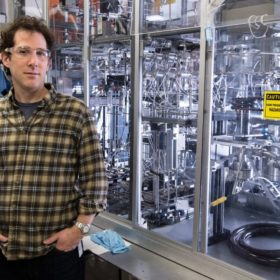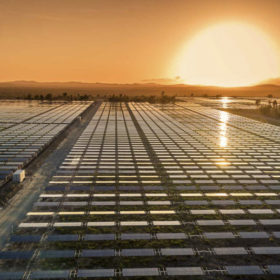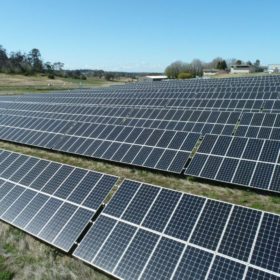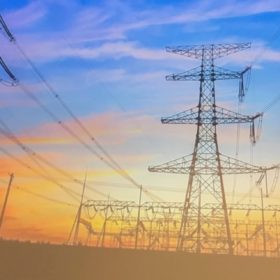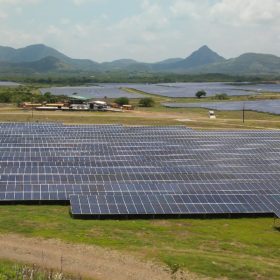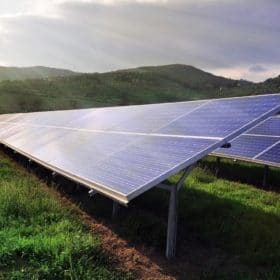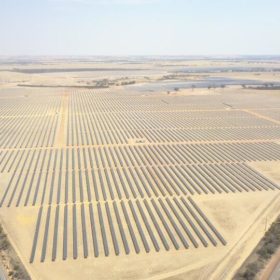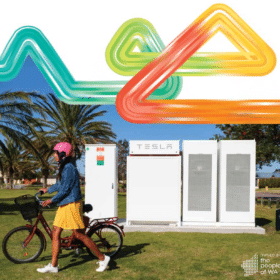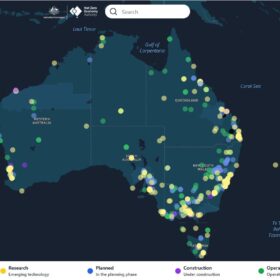The secrets to inverter success in Australia’s utility solar sector
SMA Australia had a bumper year in 2020, despite increasing competition and Covid-19, and partly because of the West Murray crisis. What’s next?
New approach to III-V tandems sets 32.9% efficiency record
A collaboration between the U.S. National Renewable Energy Laboratory and the UNSW has yielded a new efficiency record of 32.9% for a tandem cell device utilizing III-V materials. Key to the achievement was a new technique enabling the researchers to take advantage of “quantum wells” in the material that serve to trap charges and enable tuning of the cell bandgap to absorb more of the light spectrum.
Australian research improves the scope and efficiency of PV light sensitisers
Australian scientists have developed an algorithm to increase both the efficiency and compatibility of light sensitisers in solar panels, encompassing silicon cells for the first time.
2020 Year in Review
Soon 2020 will only be a worry to future high-school history students. But when they ask us if anything good at all happened in 2020, remember this review and tell them that solar PV shone in the darkness. Despite the mess of it all, 2020 has been another good year for Australian solar. The industry has demonstrated resilience, and significant progress has been made in the fields of energy storage, green hydrogen and others.
Traceable renewable energy on the half hour for C&I and communities
Powertracer is a new Australian-developed data platform that accounts for the origins of each retail customer’s energy in half-hour blocks. The effect is to open up new models of choosing and offering renewably sourced energy, and accelerate demand.
Transmission Project declared ‘critical’ as NSW pushes ahead with first REZ
The Central West Orana Renewable Energy Zone (REZ) Transmission Project has been declared a ‘Critical State Significant Infrastructure’ project, with the New South Wales Government granting it priority status throughout the approvals process.
Improving PV-based hydrogen generation with loss‐mitigation techniques
Australian scientists have demonstrated two loss-mitigation techniques that could improve solar‐to‐hydrogen (STH) conversion efficiencies and may lay the ground for cheaper PV-powered hydrogen generation. By combining the two techniques, they were able to achieve an STH efficiency of around 19.4% at realistic operating temperatures.
Australia’s leading solar research centre gets majorly overdue $19 million grant
For the first time in years, the Australian Centre for Advanced Photovoltaics (APAC) has received a major grant. The Australian Renewable Energy Agency has funded APAC to the tune of $19 million with the goal of reasserting Australia’s place at the forefront of solar technology and accelerating the competitiveness of renewable energy.
WA courts Germany with its renewable hydrogen, hosts inaugural Renewable Hydrogen Roundtable
With the joint-feasibility study between Australia and Germany into the viability of a renewable hydrogen supply chain between the two nations now underway, Western Australia, perhaps the most eager Australian state to establish a green hydrogen export industry, has hosted an inaugural roundtable with some of the two nations biggest industry hitters.
50 Megs more of distributed storage called for in WA’s south west
WA continues to work through its precise roadmap to manage the state’s vast distributed rooftop solar resources and enable further uptake of renewable generation. Pre-Christmas, Western Power is seeking to engage private enterprise in providing a value stack of storage services.
